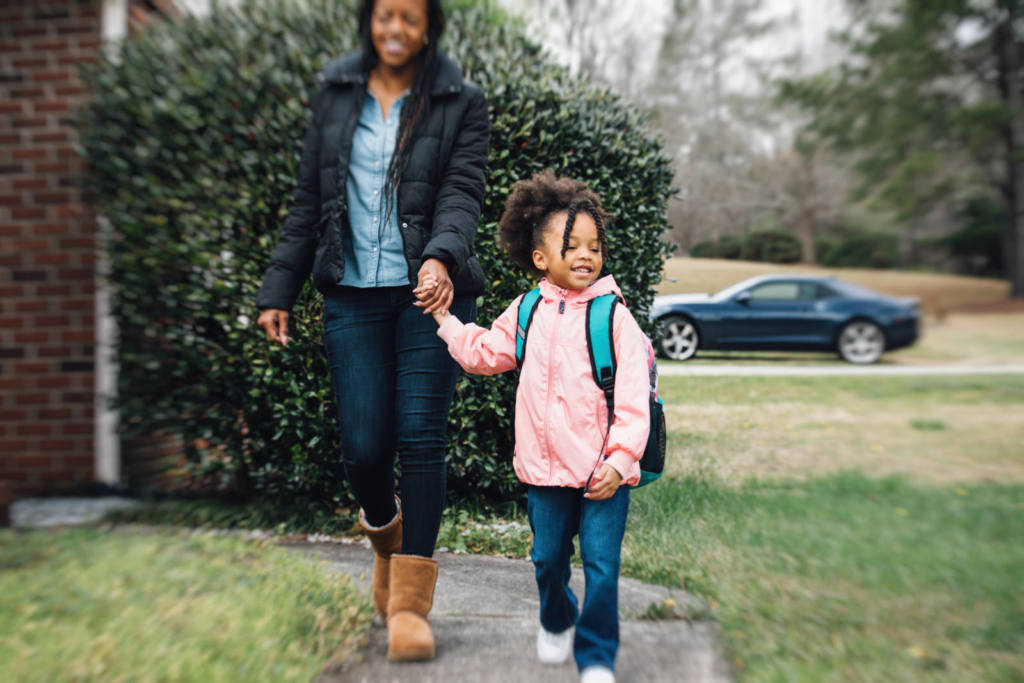Safe Routes Utah is on a mission not only to teach children how to safely walk or bike to and from school but also to motivate them to experience the benefits of choosing active modes of transportation. A walking school bus is a great way to accomplish both objectives. Here’s how it’s done: A walking school bus starts with a parent and their student leaving home to walk to school; it continues, adding walkers who live along the route; then, it arrives at school, dropping off all the passengers who boarded along the way. There is safety in numbers, so frame the benefits of walking to school in a way that motivates kids, and more passengers will be boarding your walking school bus in no time.
Walk with Friends

Children love spending time with peers, so the obvious benefit of a walking school bus to them is having fun with friends. With this fun comes the development of social skills. A walking school bus route includes students in all grade levels, so children of various ages get the chance to chat, relate to and learn from one another in a real-world way.
Don’t Let Me Down
Form or join any group, and a sense of caring about the well-being of the group often follows. Being part of a walking school bus group and caring about the success of the group can make children feel “cool”. Adults know this as accountability. Teamwork. Responsibility. Loyalty. Dependability. Trustworthiness. Unity. Being cool.
I Got This

Let the kids take the wheel of the walking school bus and navigate the route to foster independence. Your child might see this benefit as being in charge for once, while we know independence now will help them autonomously function later.
How to Start a Walking School Bus in Your Neighborhood
- A Safe Routes map, available from your school, outlines the safest routes between your home & school. Choose and test a route by walking it during the to-and-from-school commute times.
- Invite other parents and students to board your bus.
- Encourage families who live along a different route to start another walking school bus.
- Work with your Safe Routes school administrator and the school principal to learn about and comply with any program guidelines.
As participation increases, there will be more logistics to coordinate. WalkingSchoolBus.org provides additional tips, suggestions and resources to keep your walking school bus moving in the right direction.
